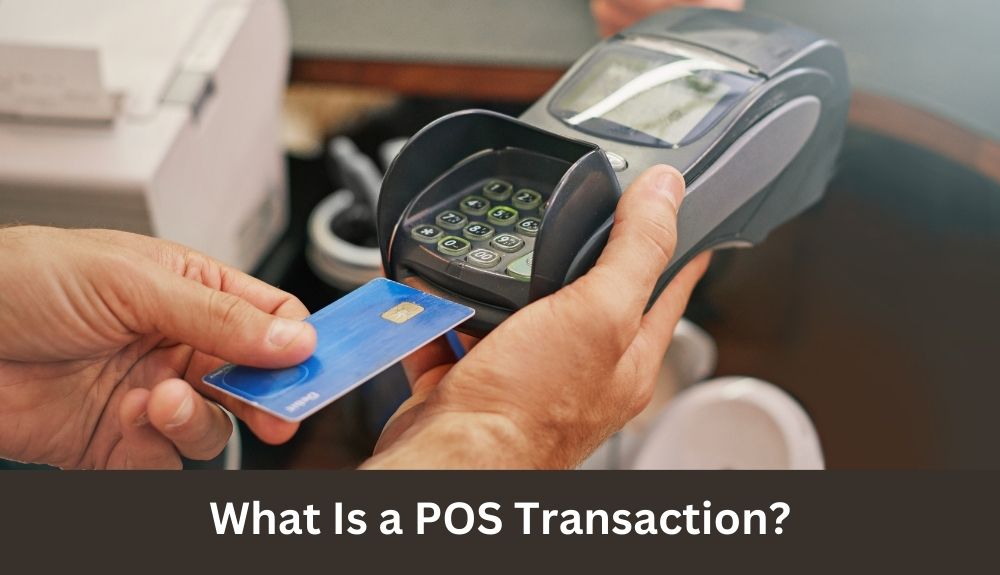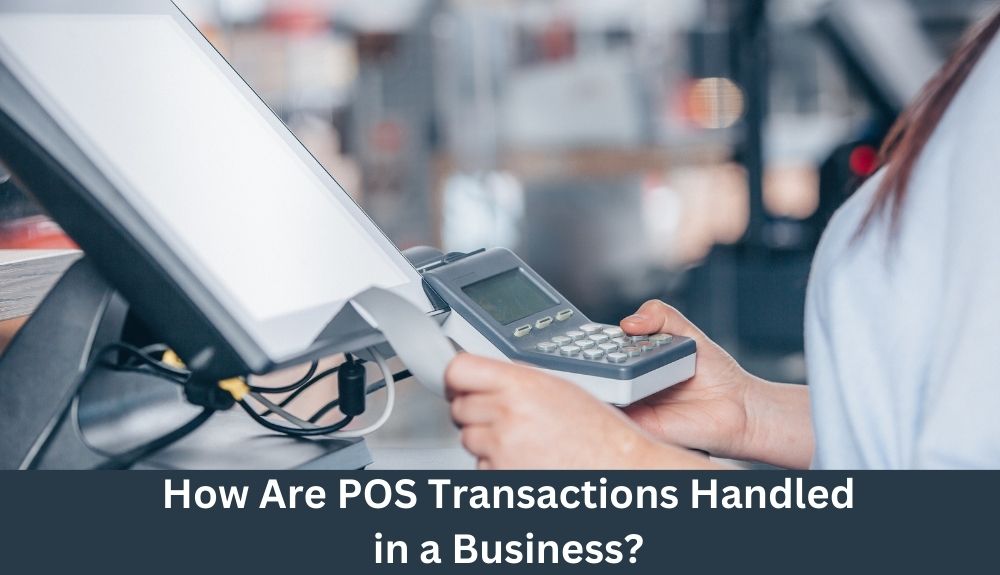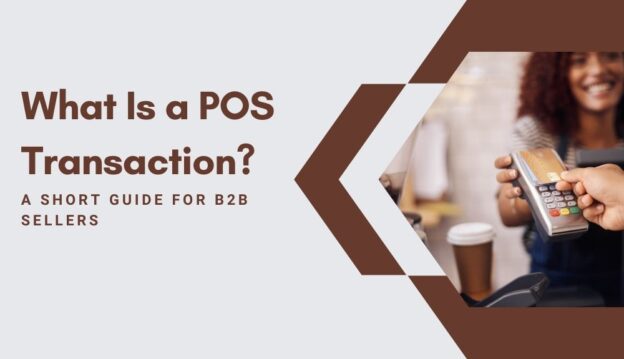Are you a B2B seller looking to expand your knowledge on point of sale (POS) transactions? In today’s fast-paced business world, understanding the ins and outs of POS transactions can give you an edge over your competition.
In this comprehensive guide, we will delve into the world of POS transactions, answering all your burning questions. We will start by explaining what exactly a POS transaction is and then explore different types of POS transactions with real-life examples. You’ll gain a solid understanding of how POS transactions work and how you, as a B2B seller, can accept them.
But it doesn’t stop there! We will also delve into the importance of POS reconciliation and its benefits, as well as address common queries about POS transactions. So, get ready to enhance your knowledge and take your B2B selling game to the next level with this ultimate guide to POS transactions.
Introduction
Understanding Point of Sale (POS) transactions is crucial for businesses in today’s fast-paced world. Whether you run a brick-and-mortar store or have an online business, POS transactions play a significant role in your daily operations. In this guide, we will delve into the definition, types, examples, and workings of POS transactions. Additionally, we will explore the importance of POS reconciliation and address frequently asked questions.
A POS transaction refers to the exchange of goods or services for payment at the point of sale. It occurs when a customer purchases items from a business, whether in-store or online. With modern advancements, POS transactions have become more streamlined and efficient, benefiting both customers and merchants.
Understanding POS transactions is essential for B2B sellers as it allows them to process payments accurately and provide excellent customer service. By implementing a reliable POS system, businesses can track sales, manage inventory, and ensure a smooth checkout experience.
In the following sections, we will delve deeper into the intricacies of POS transactions, starting with the fundamentals. Let’s explore what a POS transaction entails and why it is crucial for businesses of all sizes.
Importance of Understanding POS Transactions
Before we dive into the specifics of POS transactions, it’s crucial to recognize their importance. Whether you’re a seasoned merchant or a newbie in the business world, grasping the concept of POS transactions is vital for your financial success.
By understanding POS transactions, B2B sellers can:
1. Efficiently process payments: Having a solid understanding of how POS transactions work enables smooth payment processing, reducing errors and ensuring a positive customer experience.
2. Maintain accurate records: POS transactions allow businesses to track sales, manage inventory levels, and generate essential reports for business analysis.
3. Enhance customer experience: A streamlined POS system enables quick and secure payment processing, reducing waiting times and enhancing overall customer satisfaction.
4. Make informed business decisions: By analyzing data generated from POS transactions, businesses can gain valuable insights into consumer behavior, trends, and product performance.
By familiarizing yourself with POS transactions, you are better equipped to meet the demands of your customers and optimize your business operations. With this guide, we will provide you with the knowledge and tools necessary to navigate the world of POS transactions effectively. Let’s now explore the definition of a POS transaction in more detail.
What Is a POS Transaction?

A Point of Sale (POS) transaction refers to the process of completing a financial transaction at the point where a customer purchases goods or services from a seller. In simpler terms, it is the moment when a customer pays for their purchase. POS transactions can take place in various settings, such as retail stores, restaurants, or even online.
These transactions are crucial for businesses as they facilitate the exchange of goods or services for payment. They allow sellers to track sales, manage inventory, and analyze customer behavior. Additionally, POS transactions help businesses maintain accurate financial records and streamline their operations.
POS transactions typically involve the use of a point of sale system, which includes hardware such as cash registers, barcode scanners, and credit card readers, as well as software that enables the processing of payments. This system ensures secure and efficient transactions between the customer and the seller.
By accepting POS transactions, businesses can offer their customers multiple payment options, such as credit and debit cards, mobile payments, or even cash. This flexibility enhances customer satisfaction and convenience.
How Does a POS Transaction Work?
A point of sale (POS) transaction is a process where a customer makes a payment for goods or services at a physical or online store using a payment method such as a credit card, debit card, or mobile payment app. Understanding how a typical POS transaction works is crucial for both merchants and consumers.
Here’s a simplified breakdown of the steps involved in a typical POS transaction:
1. Customer Initiates the Transaction: The customer selects the items they wish to purchase and proceeds to the checkout counter or online shopping cart.
2. Merchant Scans or Manually Inputs Product Information: At the checkout counter, the merchant scans the barcodes on the products using a barcode scanner or manually inputs the product information into the POS system.
3. Calculation of Total Amount: The POS system calculates the total amount based on the prices and quantities of the scanned or inputted items, including any applicable taxes or discounts.
4. Selection of Payment Method: The customer chooses their preferred payment method, such as a credit card, debit card, or mobile payment app.
5. Processing the Payment: If the customer is using a physical card, the merchant swipes or inserts the card into a card reader, which securely authorizes and processes the payment. For online transactions, the customer enters their payment details securely on the website or app.
6. Authorization and Verification: The payment details are transmitted to the relevant payment processor or bank for authorization. The processor verifies if the customer has sufficient funds or credit available.
7. Approval and Receipt Generation: If the payment is approved, the customer receives a confirmation of the transaction, and a receipt is generated, either on paper or digitally.
8. POS System Updates Inventory: The POS system updates the inventory records, deducting the sold items from the available stock.
9. Settlement and Funds Transfer: The payment processor transfers the funds from the customer’s account to the merchant’s account, typically within a few business days.
By following these steps, a POS transaction allows for secure and efficient payment processing, ensuring a seamless experience for both merchants and customers.
How Can Merchants Receive Point of Sale Transactions?
Accepting point of sale (POS) transactions is crucial for merchants in today’s business landscape. By understanding and implementing different methods for accepting POS transactions, merchants can streamline their sales process and provide a seamless customer experience. Let’s explore some of the various ways merchants can receive POS transactions:
1. Traditional Cash Registers and Card Terminals
One of the most common methods is through traditional cash registers equipped with card terminals. These terminals allow customers to pay using their debit or credit cards. By swiping or inserting the card into the terminal, the transaction is securely processed, and the payment is deducted from the customer’s account.
2. Mobile Payment Systems
The popularity of mobile payment systems has been steadily increasing. Merchants now have the option to accept payments through mobile devices using dedicated applications or mobile card readers. Customers can simply tap their smartphones or scan QR codes to complete the transaction.
3. Online Sales and E-commerce Platforms
In the digital age, e-commerce has become a significant avenue for businesses to accept POS transactions. Merchants can set up online stores and integrate payment gateways to receive payments securely from customers. Customers can make purchases using their credit or debit cards, and the transactions are processed electronically.
4. Contactless Payments and Near Field Communication (NFC)
With the rise of contactless technology, merchants can accept POS transactions through near field communication (NFC). This allows customers to make payments by tapping their contactless cards or mobile devices on compatible card terminals. Contactless payments offer convenience and speed, making transactions faster and more efficient.
5. Mobile Wallets and Digital Payment Apps
Mobile wallets and digital payment apps have gained popularity among consumers. Merchants can accept POS transactions by integrating these digital payment solutions into their systems. Customers can make payments using stored cards or linked bank accounts within these apps, providing a convenient and secure payment method.
6. Customized POS Systems
Some merchants may opt for customized POS systems tailored to their specific needs. These systems often include a combination of hardware, software, and cloud-based solutions that allow transactions to be processed seamlessly. Customized POS systems enable merchants to track sales, manage inventory, and offer personalized customer experiences.
How Are POS Transactions Handled in a Business?

In any business that accepts point of sale (POS) transactions, it is crucial to have an efficient and reliable system in place for handling these transactions. One key aspect of this process is POS reconciliation, which ensures accuracy and transparency in financial records. Let’s explore the importance of POS reconciliation and how it is typically handled in businesses.
Importance of POS Reconciliation
POS reconciliation involves comparing and matching the sales data recorded in the POS system with the actual financial transactions that took place. This process serves several important purposes:
1. Accuracy in Financial Reporting: POS reconciliation helps ensure that the financial records accurately reflect the sales made and payments received. It allows businesses to identify and rectify any discrepancies, preventing financial inaccuracies and potential loss.
2. Identifying Errors and Fraud: By comparing the recorded sales data with the actual transactions, businesses can identify any errors or fraudulent activities. This includes instances of voided or unauthorized transactions, as well as discrepancies between the recorded sales and the actual cash or card payments.
3. Inventory Management: POS reconciliation provides valuable insights into inventory management. By analyzing sales data, businesses can identify popular items, monitor stock levels, and plan for restocking or inventory adjustments.
Handling POS Reconciliation in Businesses
The process of handling POS reconciliation can vary depending on the size and complexity of the business. However, some common practices include:
1. Regular Reconciliation: Businesses perform regular POS reconciliation to ensure ongoing accuracy and consistency in financial records. This is typically done on a daily, weekly, or monthly basis, depending on the business volume.
2. Matching Transactions: The recorded sales data in the POS system is matched with the actual cash or card payments received. This includes verifying the transaction amounts, payment methods, and customer details, such as receipts, invoices, or digital records.
3. Investigating Discrepancies: If any discrepancies are identified during the reconciliation process, businesses investigate the reasons behind them. This may involve reviewing transaction records, consulting with the staff involved, or conducting further analysis to pinpoint any errors or fraudulent activities.
4. Adjusting Records: Once the reconciliation process is complete, any necessary adjustments are made to the financial records. These adjustments ensure that the recorded sales and payment data accurately reflect the actual transactions that occurred.
By implementing a robust POS reconciliation process, businesses can maintain accurate financial records, prevent loss, and optimize their inventory management. It also helps build trust and confidence among customers and ensures compliance with financial regulations.
Remember, POS reconciliation is just one aspect of handling POS transactions in a business. It plays a vital role in maintaining financial accuracy and transparency, and should be a priority for all businesses that engage in point of sale transactions.
Conclusion
Understanding the process of a POS transaction is essential for merchants and consumers alike. By simplifying the complex series of steps involved, this breakdown helps shed light on the inner workings of a typical POS transaction, from the initial item selection to the final settlement of funds.
POS Transaction Types
Point of Sale (POS) transactions come in various forms, each serving a specific purpose in the world of business. Understanding the different types of POS transactions is essential for merchants to effectively manage their sales and provide convenient payment options to their customers.
1. Online Sales
Online sales refer to transactions that take place over the internet. With the proliferation of e-commerce, more businesses are embracing online sales as a way to reach a larger customer base. Customers can select items, make payments, and have their purchases delivered to their doorstep, all through the convenience of an online platform.
2. Offline Sales
Although online sales have gained popularity, offline sales remain a significant part of the retail landscape. These transactions occur within physical retail stores, where customers browse products, bring them to the checkout counter, and make payment using various methods, such as cash, debit cards, or credit cards. Offline sales provide customers with an opportunity to see, touch, and experience products firsthand before making a purchasing decision.
3. Returns
Returns are another type of POS transaction that occur when customers decide to bring back purchased items due to various reasons, such as defects or dissatisfaction. Merchants need to have clear policies and procedures in place to handle returns effectively. This includes providing refunds or exchanges, updating inventory records, and ensuring customer satisfaction.
Each type of POS transaction plays a crucial role in the overall sales process. By offering multiple options, businesses can cater to the preferences of their diverse customer base, leading to increased customer satisfaction and loyalty.
Remember, effectively managing POS transactions is essential for merchants to guarantee smooth operations, accurate record-keeping, and seamless customer experiences.

